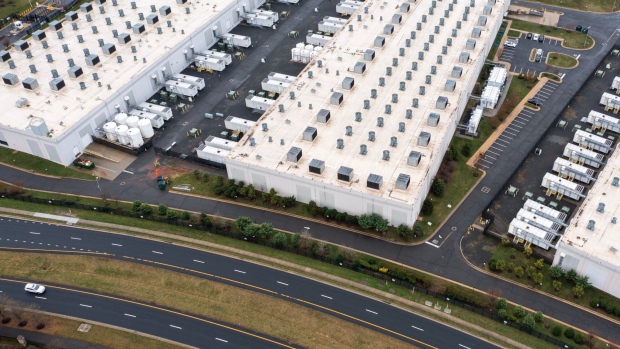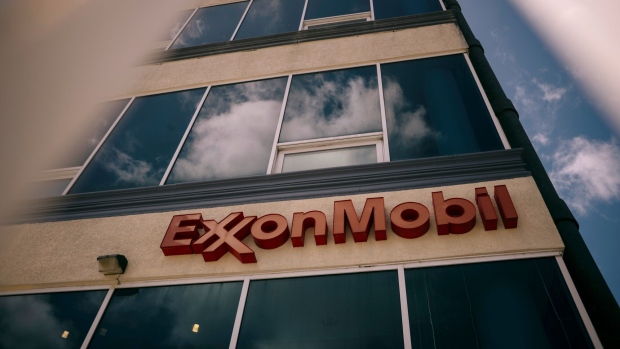The recently completed Trans Mountain pipeline expansion will boost Canadian oil prices for "years" to come, an executive with oilsands producer MEG Energy Corp. said Tuesday.
"It is great for industry and Canada to have that tremendous asset available," said MEG's vice-president of marketing Erik Alson during a conference call with analysts to discuss the company's first-quarter earnings.
Canadian heavy oil has historically sold at a discount to lighter U.S. crude, in part due to differences in product quality and transportation costs, but also due to a lack of pipeline export capacity that has limited market access for Canadian oil.
At times, that discount has been severe. Rising oilsands production and limited pipeline space in the fall of 2018 caused Canada's heavy oil benchmark price, known as Western Canada Select, to sell at nearly US$50 per barrel below the U.S. benchmark West Texas Intermediate. The government of Alberta ended up curtailing oil production in the province for a time to address the problem.
A similar problem occurred in 2012-2013, prompting then-Alberta premier Alison Redford to blame what she called the "bitumen bubble" for a massive shortfall in government revenues.
A 2020 study by IHS Markit estimated that insufficient pipeline export capacity resulted in US$14 billion in lost value to Canada between 2015 and 2019.
But the Trans Mountain pipeline expansion is expected to change things. The expansion, which marked its official opening last week, gives Canadian oil shippers access to an additional 590,000 barrels-per-day of pipeline capacity and opens up new markets for oilsands product in Asia and along the U.S. Pacific Coast.
MEG is one of the main beneficiaries of the Trans Mountain expansion, with 20,000 barrels per day of contracted capacity on the pipeline.
Prices for Canadian heavy oil increased, and the WCS-WTI differential narrowed, in April in anticipation of the start-up of the pipeline expansion and Alson said Tuesday he expects that to be a long-term trend.
"With this critical infrastructure now complete, we anticipate light-heavy differentials will remain narrow for years," he said.
Oilsands companies have had years to ramp up their production in advance of Trans Mountain coming online, since the pipeline expansion was first proposed a dozen years ago and took more than four years to construct. Many analysts have suggested that the pipeline will quickly be filled, something Alson acknowledged.
"As an industry, we have a history of filling available egress, and I think that will happen again over time," he said.
"There are various estimates as to when that could occur. We’ve seen (projections) as recent as two years, others within five or six. Our thinking is closer to the outer end of that time frame."
Alson said he does not expect another oil pipeline to be built in Canada. But he said a potential future expansion of Enbridge Inc.'s Mainline pipeline network, which has been expanded many times in its 75-year history, could offer some relief to oil shippers once Trans Mountain is full.
He said there may also be ways to enhance the efficiency, or "de-bottleneck" other existing pipelines without starting from scratch with new construction.
MEG Energy Corp. said it earned $98 million in its first quarter, up from $81 million during the same quarter last year.
The Calgary-based company's revenues totalled $1.4 billion, down from $1.5 billion a year earlier.
Diluted earnings per share were 36 cents, up from 28 cents.
Bitumen production averaged about 104,000 barrels per day during the period ended March 31.
Former chief operating officer Darlene Gates stepped into the chief executive role at MEG on May 1, replacing outgoing CEO Derek Evans.
This report by The Canadian Press was first published May 7, 2024.
Oil begins moving on $34 billion Trans Mountain pipeline expansion
Amanda Stephenson, The Canadian Press
Canada's energy sector as well as the country's main oil-producing province celebrated Wednesday as the long-awaited $34-billion Trans Mountain pipeline expansion officially came online.
Crown corporation Trans Mountain Corp. issued a statement Wednesday confirming that oil is now moving on the expanded pipeline, which is currently 70 per cent full as crude continues to be added to the new system.
The company said the so-called "Golden Weld," the final piece of construction work required to complete the pipeline, took place April 11 in B.C.'s Fraser Valley, between the communities of Hope and Chilliwack.
It said tanker ships will be able to load oil for delivery to Pacific and Asian markets by mid-May.
“Trans Mountain has demonstrated that challenging, long linear infrastructure can be built in Canada,” said Trans Mountain Corp. CEO Dawn Farrell in the statement.
“With our project management team and contractors, we were able to build 988 kilometres of new pipeline, 193 kilometres of reactivated pipeline, 12 new pump stations, 19 new storage tanks, and three new berths at Westridge Marine Terminal in Burnaby."
"This is a great day for Canada, to get this pipeline up and running," said Jon McKenzie, CEO of Cenovus Energy Inc. on a conference call with analysts Wednesday morning.
"The people of Canada are going to see the benefit for a long period of time in terms of increased taxes and royalties and the like."
Alberta premier Danielle Smith also hailed the milestone, saying in a news release that the expanded pipeline means "a new era of prosperity and economic growth."
"The completion of TMX is monumental for Alberta," Smith said.
"For Alberta this is a game-changer. The world needs more reliably and sustainably sourced Alberta energy, not less."
The Trans Mountain pipeline expansion project involved twinning an existing pipeline that runs from Alberta to the B.C. coast. The expansion increases the Trans Mountain system's shipping capacity from 300,000 barrels per day to 890,000 barrels per day, and will help open up global export markets for Canadian oil.
The increased capacity is also expected to help improve the price Canadian oil companies receive for their product.
But while the project's completion is being hailed by Canada's energy sector as a win, it did not come easily.
The pipeline expansion was first proposed in 2012 by Kinder Morgan Canada, which encountered so much environmental and Indigenous opposition that it ultimately threatened to scuttle the project.
The federal government purchased the pipeline for $4.5 billion in 2018 in an effort to get the project over the finish line. Once construction did start, the project ran into numerous delays and budget overruns, with its price tag spiralling over the course of four years to an eye-popping $34 billion.
Cenovus' McKenzie said Wednesday he didn't want to taint "a great day" with too much talk of the project's challenges. But he suggested the difficulties encountered by Trans Mountain are indicative of a broader problem.
"I think as a nation we suffer — and I don't think I'm saying anything that people don't already know — from lower and decreasing productivity, and we need to find ways to get major projects built to get infrastructure built to the benefit of all Canadians," McKenzie said.
"And I think we would all realize that 13 years is far too long for a project of this national importance to get built."
The cost and challenges associated with building Trans Mountain also cast a shadow over its ultimate sale. The federal government has indicated it does not wish to be the long-term owner of the pipeline, but the expansion project's ballooning price tag means experts say the government will likely have to take a significant writedown if it is able to sell the asset.
The Trans Mountain saga has also left some wondering whether an oil pipeline will ever again be built in this country.
Industry watchers say the Trans Mountain expansion will reach its maximum capacity within just a handful of years, thanks to increased oil output by Canadian producers. But the time, cost and regulatory burden associated with building a similar project would be major investment barriers.
"It is increasingly difficult to build pipelines in this country, and it wouldn't surprise me if this was the last pipeline," McKenzie said.
"But the reality is we have a tremendous resource here in Canada and we produce our oil in my view, more sustainably than probably anywhere else in the world. And if we were in a position where, as a nation, we decided to take that to market, we should be building more pipelines."
This report by The Canadian Press was first published May 1, 2024.






